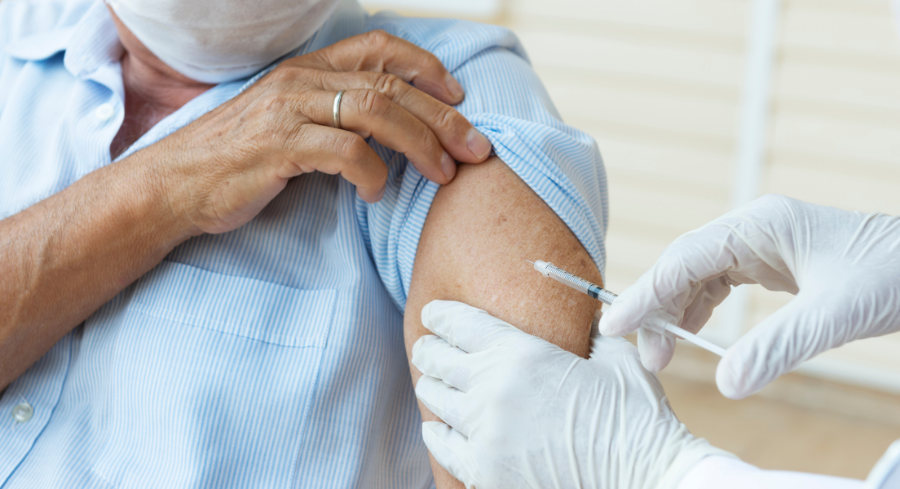Researchers Pave Way for COVID-19 Treatments and Vaccines

More than one year since the start of the novel coronavirus pandemic, innovative treatments and research have led to three vaccines authorized for emergency use in the United States by the Food and Drug Administration. The Texas research community has been instrumental in the fight against SARS-CoV-2.
Below are a few of the many achievements of Texas researchers in the development of COVID-19 treatments and vaccines:
1. Texas A&M University Researcher First Identifies Remdesivir Treatment
Wenshe Ray Liu, Ph.D. identified the Gilead Sciences-developed antiviral drug remdesivir as a potential COVID-19 treatment in January 2020.
2. The University of Texas at Austin Lab Maps COVID-19 Spike Protein
The lab of Jason McLellan, Ph.D. created the first 3D atomic-scale map of the COVID-19 spike protein, the part of the virus that attaches to and infects human cells.
3. UTSW Team Analyzes Protein That Could Inhibit Coronavirus
UT Southwestern Medical Center researchers and international collaborators found that the protein LY6E impairs the coronavirus’s ability to initiate infection, which could lead to treatments for the disease.
4. DOD Collaborates with SwRI to Develop COVID-19 Treatment
Southwest Research Institute was awarded a contract in May 2020 to collaborate with the Department of Defense to screen millions of drug compounds with SwRI’s Rhodium software in search of possible COVID-19 treatments.
5. Houston Methodist Sequences the Genome of 5,000+ COVID-19 Strains
Houston Methodist sequenced the genome of more than 5,000 strains of COVID-19 and identified mutations accounting for Houston-area infections during the second wave in the summer of 2020.
6. UT Health San Antonio Discovers Infection Mechanism of COVID-19
Scientists at UT Health San Antonio discovered that an enzyme produced by SARS-CoV-2 modifies its mRNA cap enabling the virus to enter a human’s cells with little to no indication of infection.
7. Texas Biomed Conducts One of Largest Rodent Projects for Antibody Testing
Texas Biomedical Research Institute tested the efficacy of human monoclonal antibodies (MAbs) to identify highly effective combinations of SARS-CoV-2 MAbs that offer protection against the disease’s progression.
8. Vaccine from TAMEST Member Peter Hotez, M.D., Ph.D. (NAM) in Human Trials
Modeled after a vaccine Dr. Hotez’s lab at Baylor College of Medicine created for Severe Acute Respiratory Syndrome (SARS), the vaccine will be manufactured by India’s Biological E. Limited and distributed across the developing world.
9. UTMB Finds New Approach for Live-Attenuated Vaccine Development
Findings from The University of Texas Medical Branch at Galveston enable scientists to engineer viruses without proteins that suppress host immune response. These engineered viruses could be used to prime immune systems as vaccine candidates.
10. TAMEST Member Lydia E. Kavraki, Ph.D. (NAM) Identifies COVID-19 Weakness
Dr. Kavraki, Rice University, and a team of researchers found that “position 4” of the peptide drawn from a SARS-CoV virus has a significant influence on how it stably binds with a receptor central to the immune system’s ability to attack diseased cells.
TAMEST is proud to represent these Texas research universities as our member institutions and trusted partners. To see more of what our member institutions have done over the course of the pandemic, please see our COVID-19 research coverage: Spring 2020 Update, Summer 2020 Update and Winter 2020 Update.

